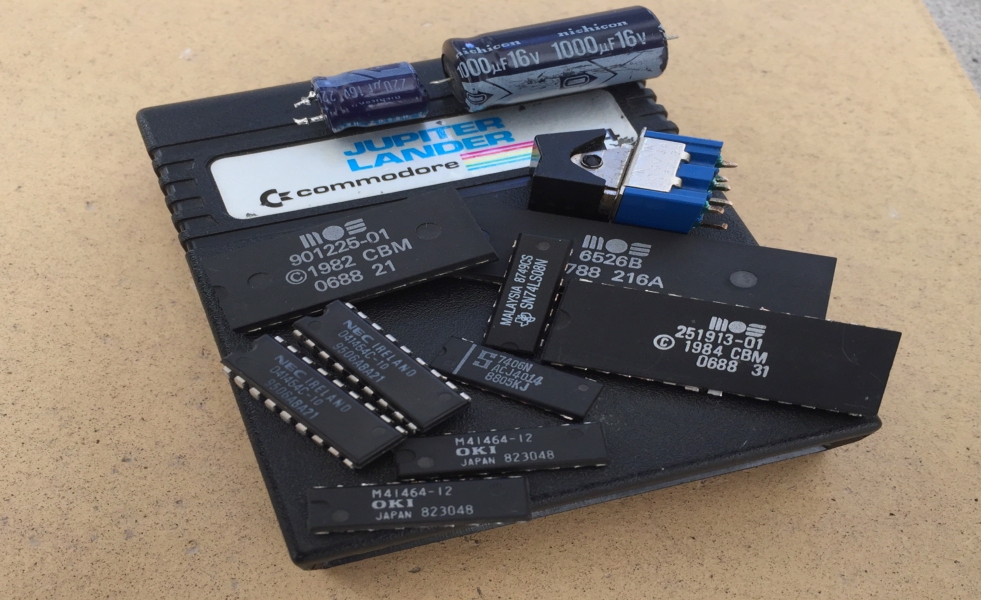I have fixed quite a few broken Commodore 64’s, but this one was by far the most challeging one! The machine started out as a simple memory fault that was fixed so it could run the cartridge game of Jupiter Lander. However, it took a heap of replacement chips before I finally cracked it! In the process, I found that Jupiter Lander seems to be able can run without working memory chips, Character ROM and Kernal ROM… I ended up using a brute force chip replacement approach by swapping everything even remotely connected to a black startup screen. A total of 9 chips, a power switch, an RF box and two capacitors were replaced before the machine was up and running again. It may have been cheaper to just buy a whole new board, but where is the fun in that 🙂
Read the struggle of the repair job here (link).
© breadbox64.com 2017



Respect!
Thanks for the nice story and I’m happy that you succeeded in repairing your C64! I hope some day I will do it too (black screen of course) 🙂
This repair has been the most difficult one I’ve done so far. In hindsight, I could have done things differently and saved a few chips. However, sometimes more knowledge is gained from the journey and not the destination. I guess fixing C64’s sometimes has a steep learning curve – at least for me it has 😉
Love your repair logs! But I am wondering why you cut suspect bad chips instead of desoldering them? Wouldn’t that save you a lot of chips (and money) if it turns out a particular chip wasn’t at fault after all?
Hi Martijn, thanks for your comment 🙂 The smaller memory and logic chips (74xx) that are still available are usually pretty cheap. I almost always cut those when expecting them of being faulty. Regarding the larger chips you are absolutely right. I sometimes desolder them to save a possible good chip. However, the risk of lifting/breaking a fragile trace or pad on the old PCB’s are bigger when trying to save it than by simply cutting the legs (link, link, link). At least that is my experience with the tools that I have available for desoldering (heat gun, sucker, desoldering braid). My biggest concern is introducing a broken trace that is very hard to find on a board that also have broken chips. So I guess desoldering a chip depends on the individual repair.